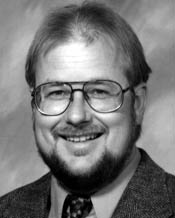Program Information
Innovation in Medical Physics and Engineering

R Mohan
N Pelc
D Jaffray
T Mackie
R Mohan1*, N Pelc2*, D Jaffray3*, T Mackie4*, (1) UT MD Anderson Cancer Center, Houston, TX, (2) Stanford University, Stanford, CA, (3) Princess Margaret Hospital, Toronto, ON, (4) University of Wisconsin, Madison, WI
Presentations
TU-C-BRF-1 Tuesday 10:15AM - 12:15PM Room: Ballroom FWe seek to heighten the awareness of the role of research and innovation that leads to clinical advances in the field of medical physics and engineering. Marie Curie (discovery and use of radium) and Harold Johns (Co-60 tele-therapy) in radiotherapy, and pioneers in imaging (Allan Cormack and Godfrey Hounsfield for the CT and Paul Lauterbur, Peter Mansfield for MRI, etc.) were scientists often struggling against great odds. Examples of more recent innovations that are clearly benefitting our patients include IMRT, Image Guided Radiation Therapy and Surgery, Particle Therapy, Quantitative imaging, amongst others.
We would also like to highlight the fact that not all of the discovery and engineering that we benefit from in today’s world, was performed at research institutions alone. Rather, companies often tread new ground at financial and reputational risk. Indeed the strength of the private sector is needed in order to bring about new advances to our practice.
The keys to long term success in research and development may very well include more public and private research spending. But, when more investigators are funded, we also need to recognize that there needs to be a willingness on the part of the funding institutions, academic centers and investigators to risk failure for the greater potential achievements in innovation and research.
The speakers will provide examples and insight into the fields of innovation and research in medical physics from their own first hand experiences.
Learning Objectives:
1. To obtain an understanding of the importance of research and development towards advances in physics in medicine.
2. To raise awareness of the role of interdisciplinary collaborations in translational research and innovation.
3. To highlight the importance of entrepreneurships and industrial-institutional research partnerships in fostering new ideas and their commercial success.
4. To recognize and account for the risk of failure for the greater potential achievements in innovation and research.
Handouts
- 90-24326-339462-103139.pdf (R Mohan)
- 90-24327-339462-103189.pdf (N Pelc)
- 90-24328-339462-103005.pdf (D Jaffray)
- 90-24329-339462-103094.pdf (T Mackie)
Contact Email:





